Nombre:
Buda del Templo de Puning
Otro:
Localización:
View Larger Map
Récord: 27.21 m
Tipo: Estatuas
Categoría: Guanyin
Foto:
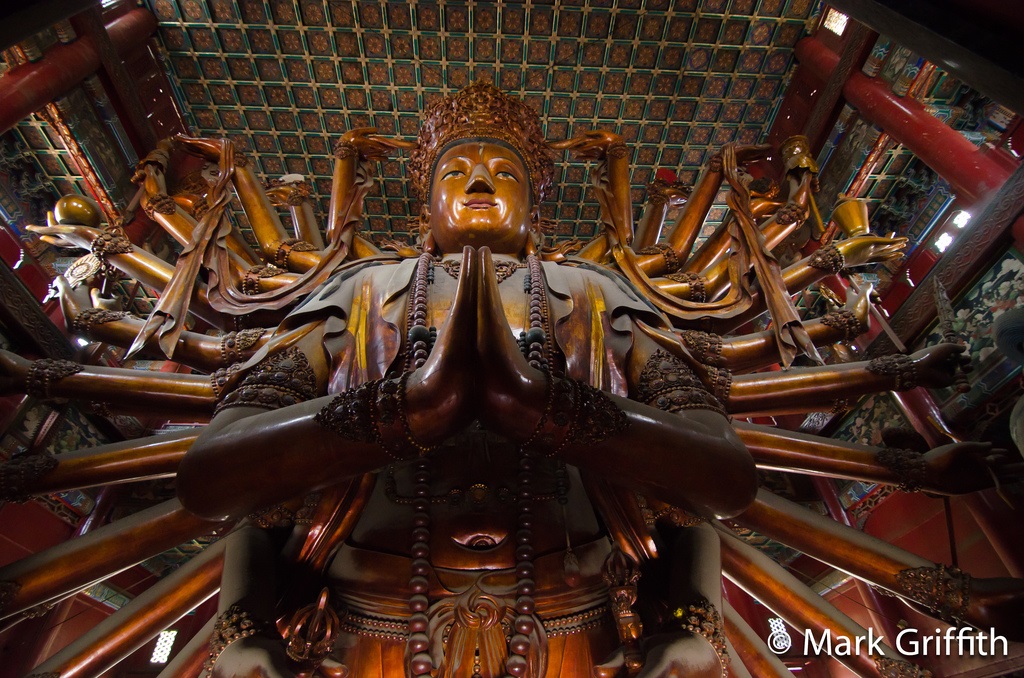
Voto:
Continente: Asia
País: China
Localización: Chengde, Provincia de Hebei
Año: 1755
Estado: Terminado
Descripción:Puning Si, el Templo de la Paz en Chengde
Publicado por Jaime Márquez
En las afueras del pueblo de Chengde, en la provincia de Hebei, nos encontramos con una de los conjuntos arquitectónicos más impresionantes de China: la Villa de Verano. También conocida como el Palacio Vacacional de la Familia Imperial Qing, comprende más de un centenar de edificios, incluyendo doce templos, entre los que destacan los Ocho Templos Exteriores, construidos en la parte norte de Gubeikou (una de las secciones de la Gran Muralla).
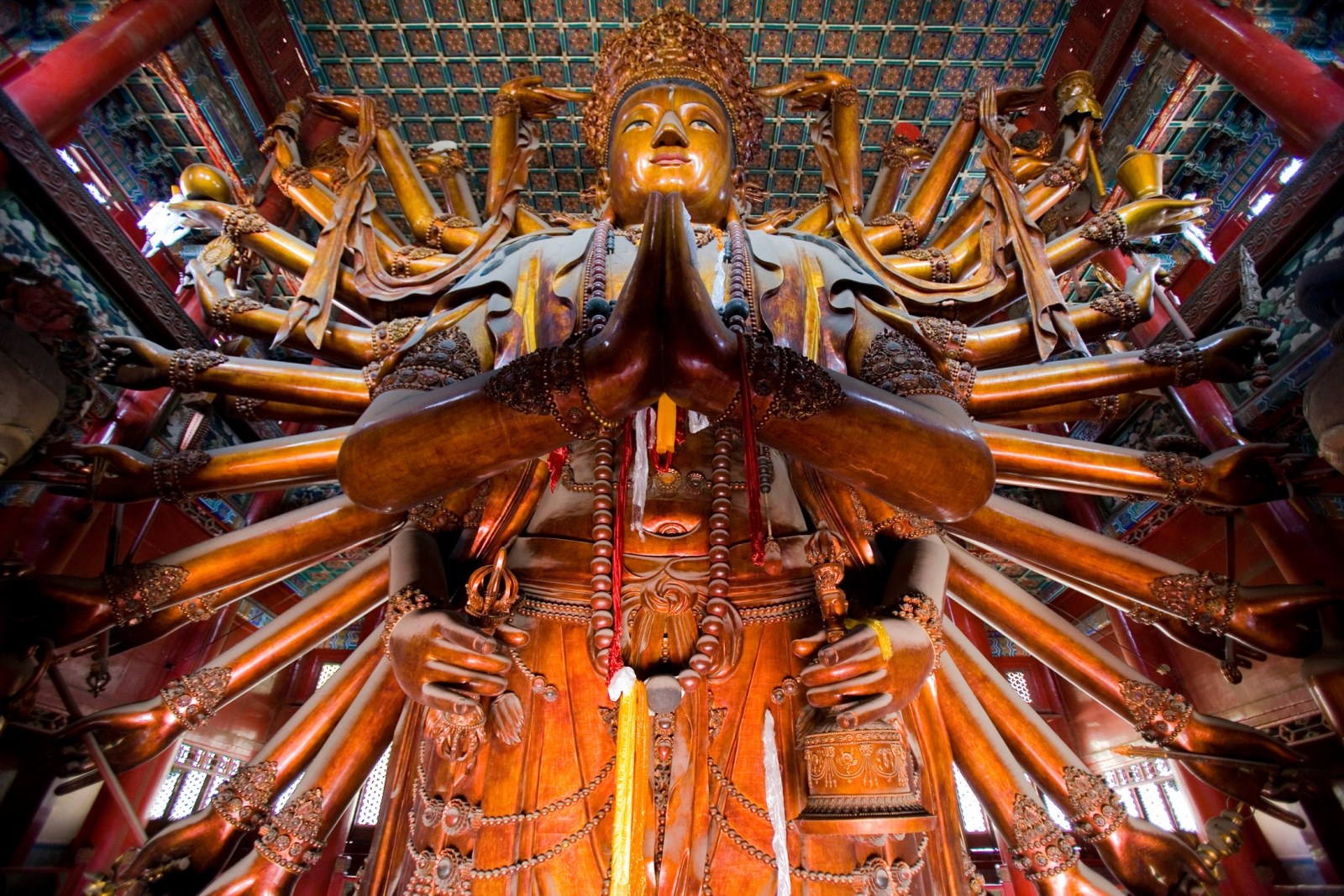
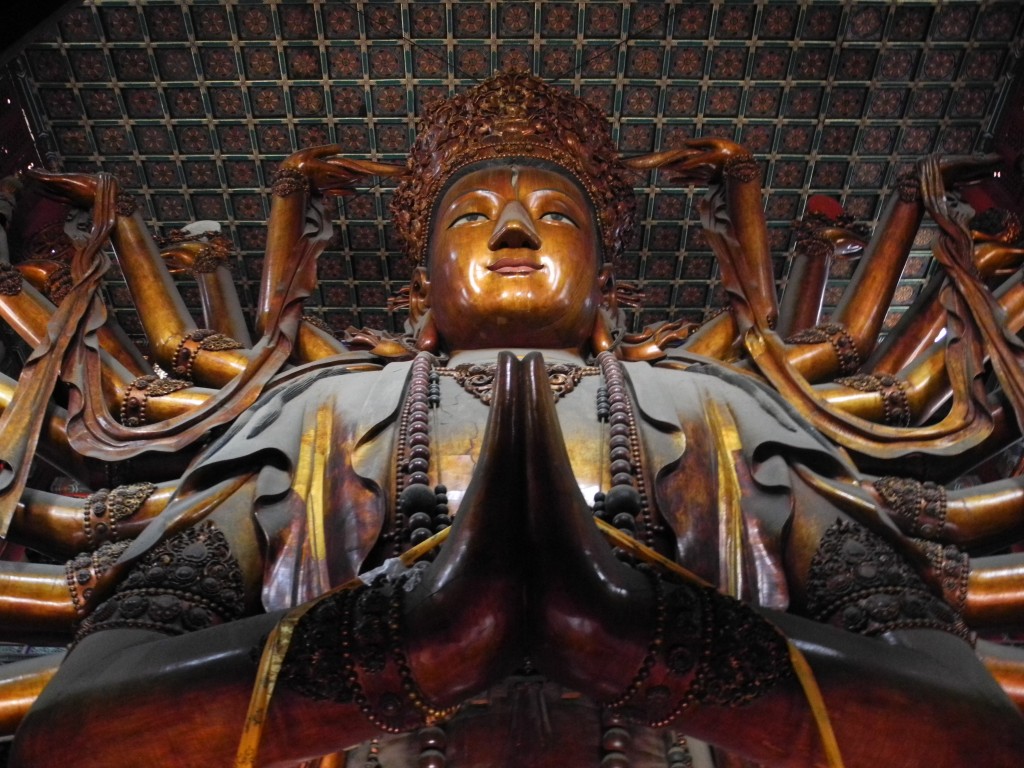
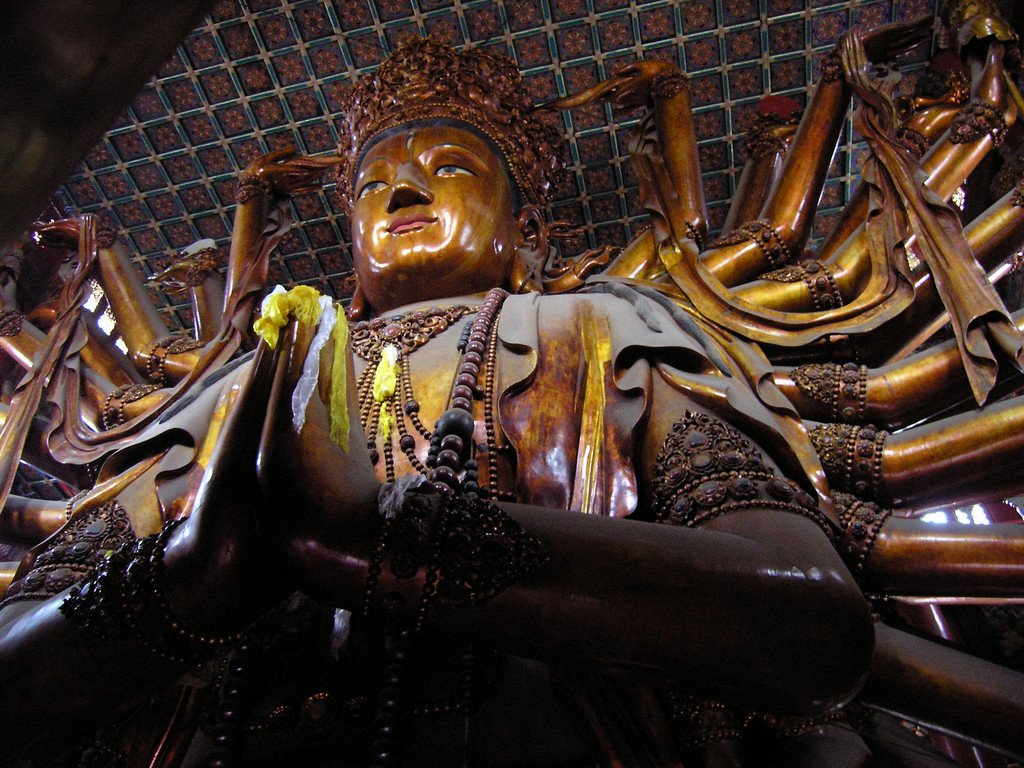
Los doce templos fueron edificados sucesivamente entre los años 1713 y 1780, durante el gobierno de los emperadores Qianlong y Kangxi, en diferentes estilos arquitectónicos, pudiendo apreciarse reminiscencias de Mongolia, del Tíbet y de la arquitectura Han. El conjunto, incluyendo la Villa de Verano, fue declarado como Patrimonio de la Humanidad por la Unesco en Septiembre del año 1994.
Ocho de estos doce templos eran regidos por el Lifan Yuan, organismo que se encargaba de los asuntos relacionados con las minorías, como era el caso de mongoles y tibetanos, de ahí que se les terminase llamando Templos Exteriores.
Dentro de este conjunto se encuentra el Templo Puning o Templo de la Paz Universal, erigido en 1775 para conmemorar la victoria del emperador Qing sobre los rebeldes mongoles, y como muestra de amistad y respeto hacia las minorías. Situado junto a la estación de montaña de Chengde, su diseño está basado en la arquitectura tradicional tibetana y es uno de los más famosos de los Ocho Templos, junto con el de Putuo Zonghcheng.
Este templo budista guarda en su interior una joya del arte, la estatua de madera más grande del mundo, representando a la diosa de la Misericordia Guan Yin o la Bodhisattva Avalokiteśvara. Esta imponente escultura representa a la diosa con 42 brazos, y muestra un ojo en cada una de sus palmas. Con sus 22,28 metros de altura, la estatua pesa nada menos que 110 toneladas y fue construida con madera de pino, olmo y ciprés entre otras.
http://sobrechina.com/2012/11/28/puning-si-el-templo-de-la-paz-en-chengde/
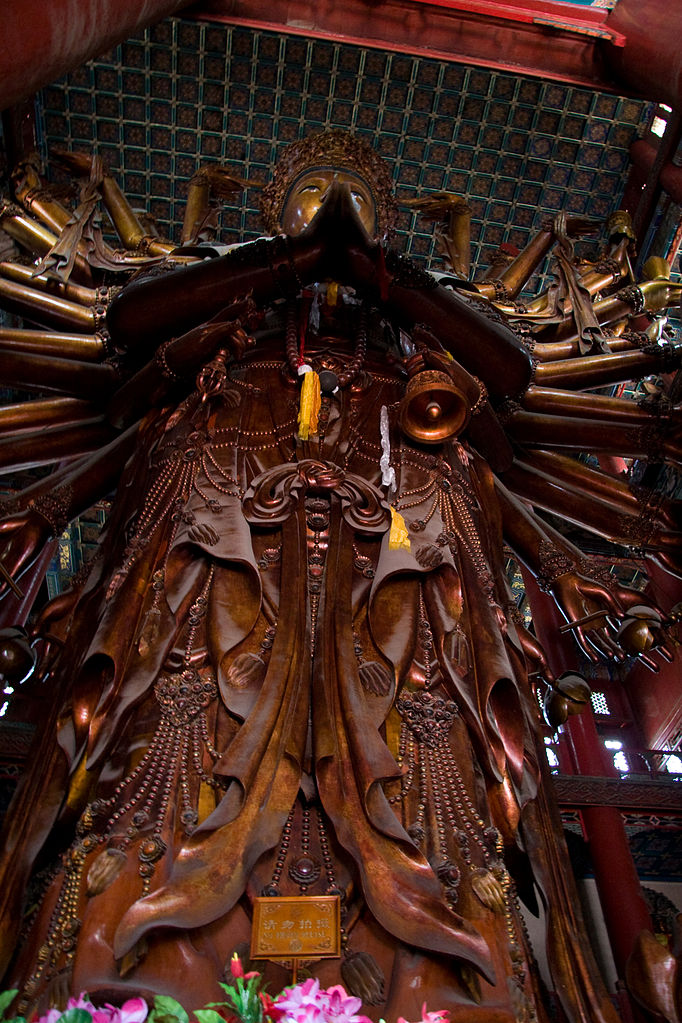


Chengde is known as the summer city for Chinese emperors; there, emperors built a palace to spend a big part of the summer because of the terrible heat of Beijing during that season; around the palace there are dozens of small replicas of the biggest and well known provincial icons of imperial China, sites where emperors wanted to please their provincial chiefs by showing how big their knowledge about their culture was. Small replicas meant big temples, like the replica of the Potala palace of Tibet for example. So, the city of Chengde is a very expensive theatrical production where temples and palaces don’t function as such, where they were visitor parlors, halls for receptions (one or two receptions!), expensive guest rooms for personalities and, now, they are museums of uselessness, beautiful replicas, but nothing else. We see a big theatrical scenario without any plays.
Puning temple is a real religious (Buddhist) point of reference in Chengde, and it’s a very important tourist site for the local government; it has the biggest statue in China of the Kuanyin with many arms. The temple was rebuilt and now it is the only beautiful spot inside the modern, ugly and polluted city of Chengde. Its monastery is now a very interesting traditional hotel and restaurant, with a special “tourist street” called “Puning street”, where Chinese life at the end of Qing dynasty is recreated, with shops, actors (real actors) dressed like people from that time and performing short spectacles which were usually given on the street: acrobatics, pantomime, musicians, storytellers, etc.
http://gustavothomastheatre.blogspot.com.es/2008_05_01_archive.html
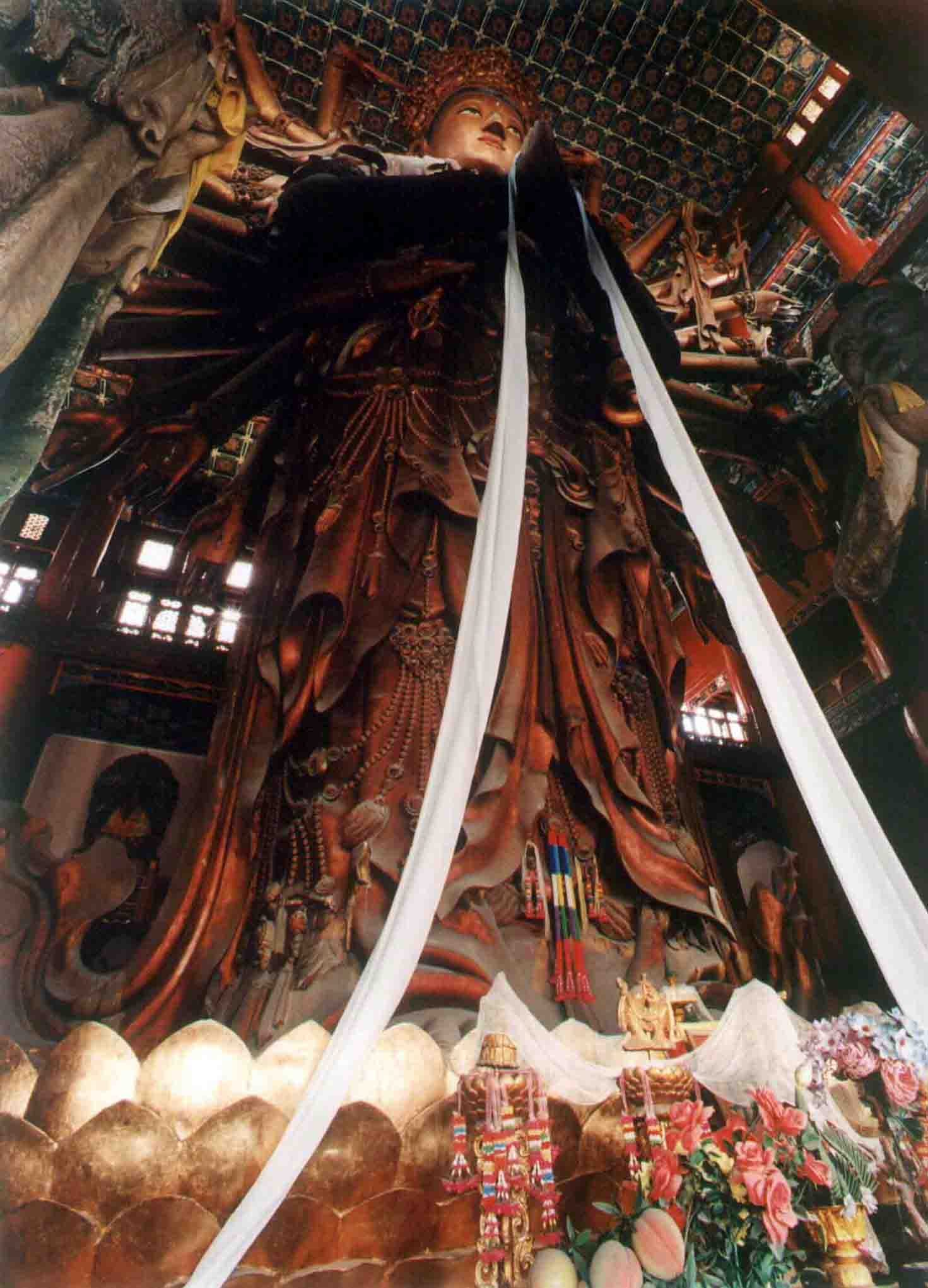
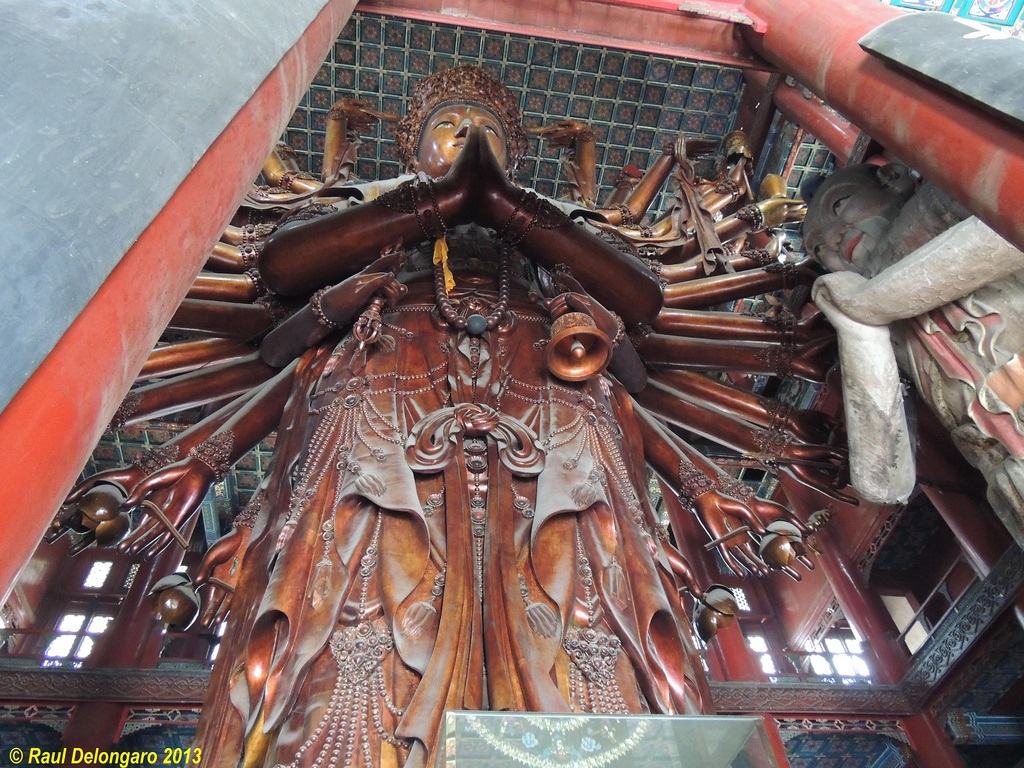
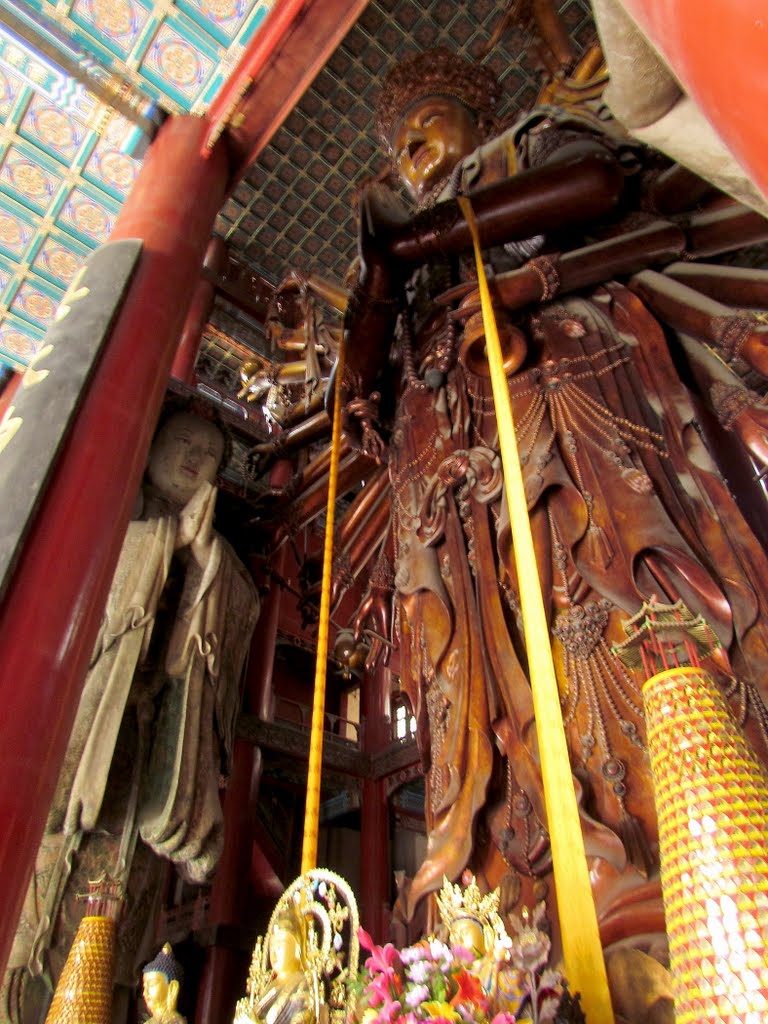
The Puning Temple (Chinese: 普宁寺; pinyin: Pǔníng Sì; literally: "Temple of Universal Peace") of Chengde, Hebei province, China (commonly called the Big Buddha Temple[1]) is a Qing Dynasty era Buddhist temple complex built in 1755, during the reign of the Qianlong Emperor (1735-1796 AD) to show the Qing's respect to Tibetan Buddhism. It is located near the Chengde Mountain Resort, and alongside the equally famed Putuo Zongcheng Temple, it is one of the "Eight Outer Temples" of Chengde. Much how the Putuo Zongcheng Temple was modeled after the Tibetan Potala Palace, the Puning Temple was modeled after the Samye Monastery, the sacred Lamaist site in Tibet. The front temple was constructed in the Chinese style, although the temple complex follows both Chinese and Tibetan architectural styles. The Puning Temple also houses the world's tallest wooden sculpture of the Bodhisattva Avalokiteśvara (22.28-meter-high and 110-ton),[2][3] hence the Puning Temple is often nicknamed the "Big Buddha Temple". The complex features temple halls, pavilions, drum towers and bell towers. [4]
http://en.wikipedia.org/wiki/Puning_Temple
http://www.ivsky.com/tupian/chengde_puningsi_v5416/
https://www.flickr.com/photos/ojo_e_virdrio/sets/72157635036324767/

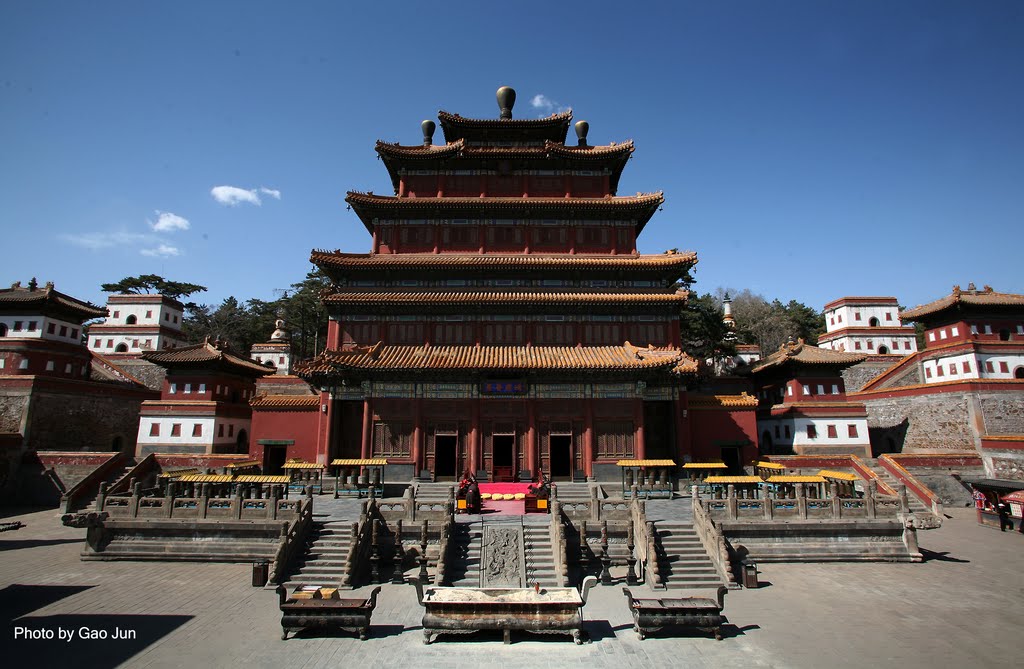
Vídeo:
Contador: 6417
Inserción: 2014-05-06 13:10:05
Lugares a visitar en un radio de 100 km (en línea recta)
Mapa de los lugares a 100 km (en línea recta)
Mostrando Registros desde el 1 hasta el 0 de un total de 0
Visitas |
Más visitados Basílica de San Marcos 154715 Catedral de Notre Dame (París) 144045 Torre de Pisa 131414 Monte Saint-Michel 100535 Presa de las Tres Gargantas 81337 |
Incorporaciones |
Comentarios hazola Cúpula de la Roca gracias me... gera Buenos Aires las mejores fotos de la mejor ciudad del... Daniel M. - BRASIL San Francisco ... PEQUE Presa Chicoasén SERA QUE ALGUIEN ME PUEDE DAR MAS INFORMACIÓN DE ESTE PROYECTO ESTUDIO EN LA UNACH Y ES PARA UN... Mery Huaca Pucllana Muy interesante, muy buena la información y... |
 Tweet
Tweet


